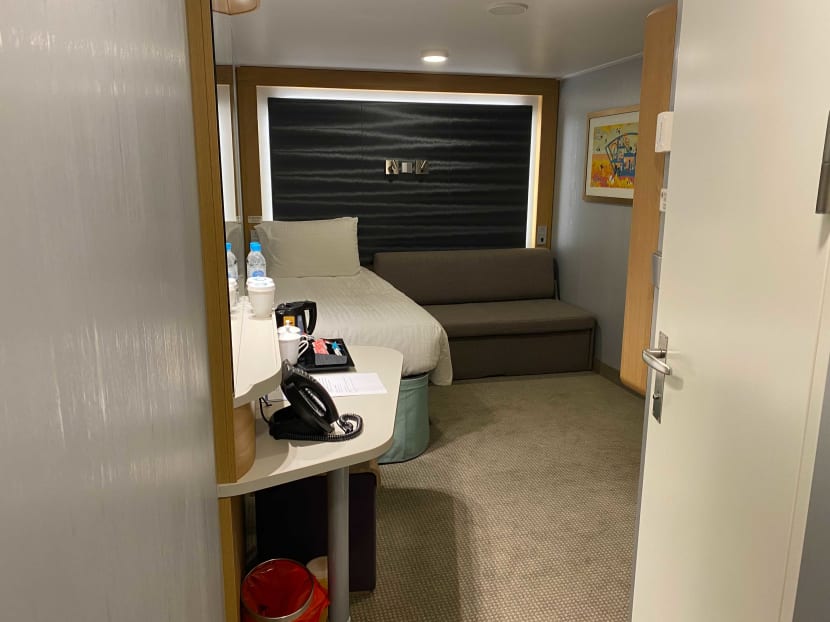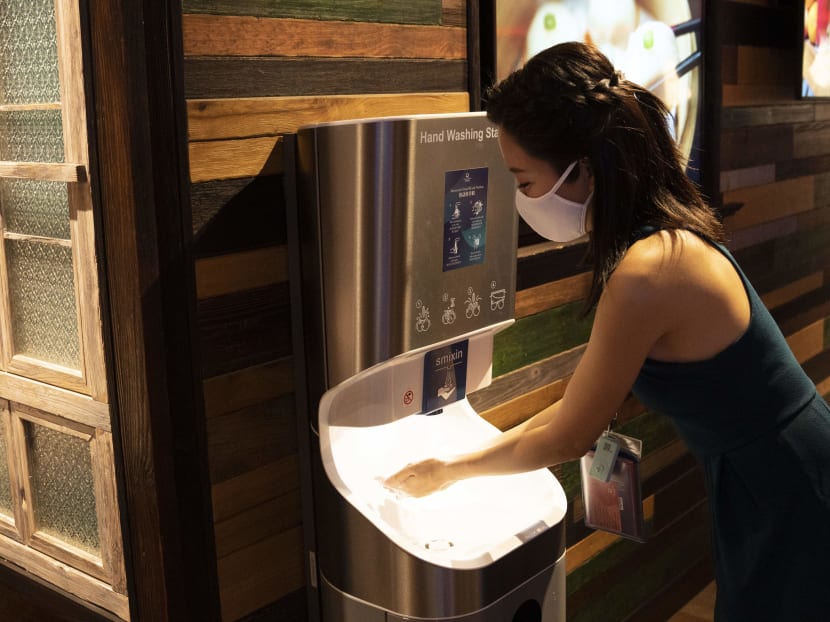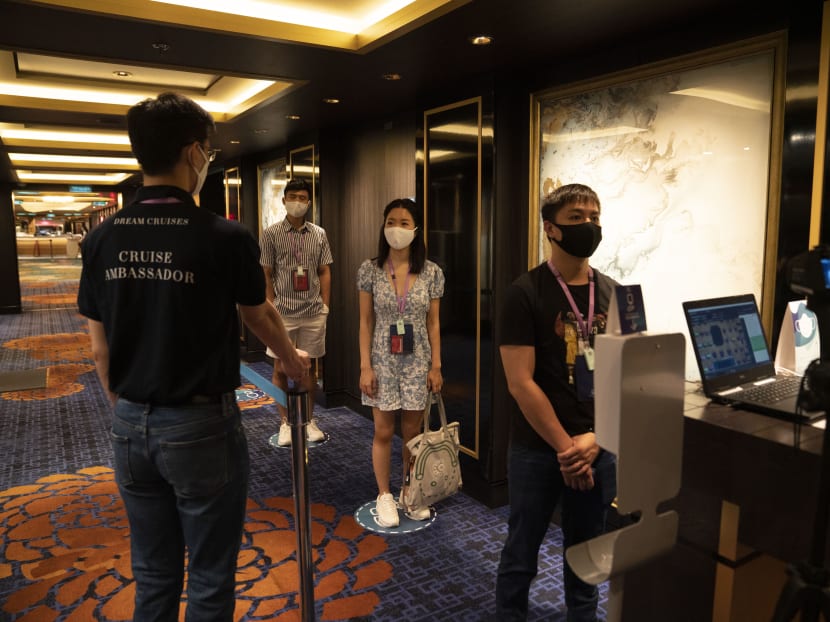Singapore’s first ‘cruise to nowhere’ sets sail
SINGAPORE — Once he got his tickets, Singapore resident Robert Gaxiola, having not travelled in the last eight months, dusted off his luggage bag and packed for a two-day cruise.
- Singapore’s first “cruise to nowhere” carried 1,400 passengers on its maiden voyage since the pandemic began
- Passengers had to undergo a health screening and an antigen rapid test before boarding the vessel
- The ship was slated to cruise to the Malacca strait and part of the South China Sea
SINGAPORE — Once he got his tickets, Singapore resident Robert Gaxiola, having not travelled in the last eight months, dusted off his luggage bag and packed for a two-day cruise.
His destination: Nowhere.
The 50-year-old creative director was one of the 1,400 passengers on board Singapore’s first “cruise to nowhere” on Friday (Oct 6), offered by Genting Cruise Lines.
It was one of the two firms that were given the green light to offer such round-trips with no ports of call as part of a pilot scheme announced by the Singapore Tourism Board last month.
The cruises have to sail at a reduced capacity of 50 per cent.
Mr Michael Goh, head of international sales at Genting Cruise Lines, said this marks an important milestone in the recovery process for the cruise tourism industry here.
But public health and safety is still its top priority, he added.
Mr Goh said testing for those boarding the ship, called World Dream, began at 9am on Friday, and passengers were allowed to embark from 2pm to give them more time to enjoy the ship. The ship was scheduled to sail at 9pm.
Before heading to the terminal at the Marina Bay Cruise Centre Singapore, passengers were allocated time slots to undergo a health screening and an antigen rapid test — which they paid S$60 for — before boarding the vessel.
They were then ushered to a nearby holding area to wait for their results, which would be made available within an hour. Those who failed the health screening or the test would be prohibited from checking in and continuing with the cruise.
“The key reason (we do the antigen test at the terminal) is to give convenience to our passengers so they don’t have to go to any clinic or designated area to do a pre-test,” said Mr Goh.

Seven isolation cabins that have been turned into negative pressure isolation rooms which will house suspected or positive cases. Photo: Nabilah Awang/TODAY
MORE MEASURES ONBOARD
A token, called the Mice pod, was issued to all guests before they came on board.
All guests were required to carry it with them physically, as it would not only be used as a means to gain entry to facilities, but also for contact tracing purposes in the event of a positive Covid-19 case onboard.
Seven isolation cabins have been turned into negative pressure isolation rooms to house suspected or positive cases, and there are 34 quarantine rooms for their close contacts.
Dr Mark Tu, 35, who heads the medical team onboard, said if a passenger is suspected to be infected with the coronavirus, he will be immediately isolated for further examination and his close contacts will be quarantined.
Dr Tu added that its medical facility is equipped to conduct a polymerase chain reaction test on board, which takes an hour to process and can detect other respiratory viruses in addition to the coronavirus.
“If (the passenger) is confirmed to be positive, we will make an announcement for all passengers to return to the cabin and the ship will undergo deep cleaning and sanitising,” said Mr Goh, adding that it will return to Singapore in less than six hours.

The ship has touchless washing stations that dispense water, soap and paper towels automatically. Photo: Genting Cruise Lines
World Dream’s captain Robert Bodin, 51, had said that depending on the cruise and the weather, the ship would cruise to the Malacca strait and the southern part of the South China Sea.
In response to TODAY’s question on the amount spent to implement safe management measures, Mr Goh did not disclose the figures but said that operations cost for World Dream increased by 40 per cent.
These costs went into enhancing measures on board, such as implementing contactless handwashing and sanitising stations outside restaurants and at common areas, and increasing the frequency of cleaning high-touch surfaces.
One passenger, Mr Gan Theng Tiong, 50, said these measures made him feel at ease on board.
“I actually feel safer onboard than when I go to crowded places… like a shopping centre,” said Mr Gan, who works in the automotive industry. “At least I know that everyone here has tested negative for Covid-19.”
Mr Gaxiola, who said the travel bug was starting to become an itch he had to scratch, was looking forward to spending the next two days relaxing and exploring the cruise with his wife.
Asked by TODAY if he was concerned about a possible outbreak, similar to the cruise ship Diamond Princess, where more than 700 people on board were infected earlier this year, he said: “No, I think they didn’t have the opportunity that we have – (having) so much data beforehand – so they couldn’t prepare.
“Now we know so much and we’re able to prepare and protect ourselves, and work out what to do in case something goes wrong.”









